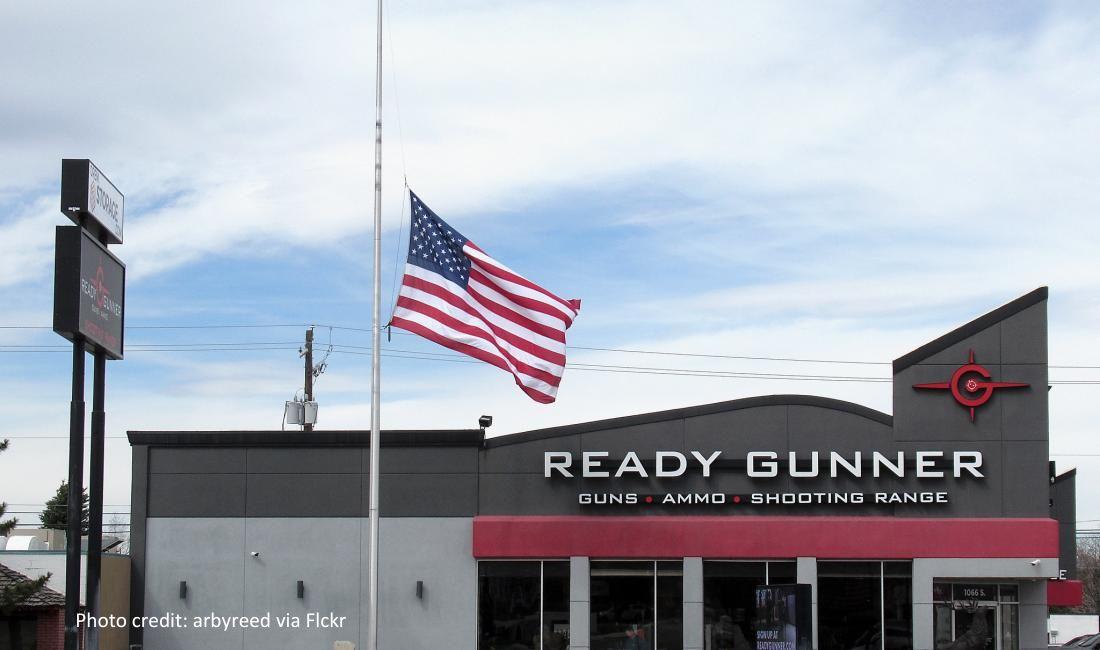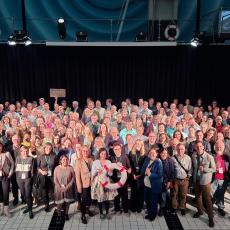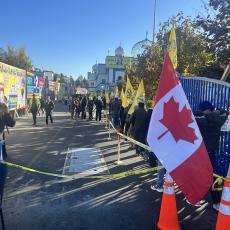The attempt on Trump's life resembles shootings in local communities
This story was written for and published by El País. In Spanish.Photo credit: arbyreed via Flckr. https://creativecommons.org/licenses/by-nc-sa/2.0/ .
It was utterly predictable, given the frequency of violence in the United States. Worse still, as investigators fail to uncover any history of mental illness in 20-year-old Thomas Matthew Crooks, Americans may have to confront this horrifying reality. The attempted assassination may have been a crime, and an attack on the country’s political process. But it also may have been a rational act.
How can I say that?
Because the United States’ dysfunctional governing system makes it far too hard to solve its most severe problems democratically and non-violently.
Not coincidentally, one of those unsolved problems is violence itself.
Americans have come to see mass shootings—defined as injuring or killing four or more people—as commonplace. There have been more than 600 mass shootings in the U.S. in each of the past three years, roughly two a day. Saturday’s assassination is just another American mass shooting, since it ended with two deaths (the shooter and a firefighter in the crowd) and at least two other injuries.
More tragically, Americans have come to accept some of the Western world’s highest rates of of violence, including the annual death of more than 40,000 people by gun-related injuries. Such gun deaths are up more than 40% since 2010. Most of those deaths are suicides, increasingly among the young. In this context, the story of Trump’s would-be 20-year-old assassin, who likely knew he’d be killed as soon as he got a shot off, is commonplace, not rare.
Political violence, too, is a big part of this picture. Americans can recite high-profile acts: the 2011 assassination that nearly killed Congresswoman Gabrielle Giffords, the 2017 mass shooting at a Congressional baseball practice that nearly killed House Majority Leader Steve Scalise, the 2020 plots to kidnap Michigan Gov. Gretchen Whitmer and the 2022 plot to kill U.S. Supreme Court Justice Brett Kavanaugh. And that’s not to mention the January 6, 2021 attack on the U.S. Capitol.
But political violence is even more frequent at lower levels of politics and government. This reflects the sad fact that a plurality of Americans—more than 20% of us in 2024 polling, or more than 60 million people—believe violence may be necessary to secure political objectives.
Local bureaucrats bear the brunt of our belief in violence. Facing down the most common tools of political violence—harassment and threats—have become a daily routine for local bureaucrats, especially those whose work involves elections or running municipalities.
In a 2021 survey by the Brennan Center for Justice, a third of U.S. election workers reported feeling unsafe and 79% wanted government-provided security. Polling by the National League of Cities found that more than 80% of Americans have experienced harassment, threats and violence themselves. The sheer volume of local threats makes it nearly impossible to investigate their sources, much less punish the offenders.
The other problem is that political violence works, by unifying some parties and deterring others. “Political violence directly serves an electoral purpose,” writes Rachel Kleinfeld, a senior fellow in Carnegie’s Democracy, Conflict, and Governance Program. “Using violence to defend a group bonds members to the group. Thus, violence is a particularly effective way to build voter “intensity.”'
Kleinfeld has identified four factors that elevate the risk of election-related violence. And the U.S. has all four, she has written.
One is highly competitive elections that shift the balance of power—a problem exacerbated by America’s winner-take-all system of elections that does not permit power sharing or proportional representation.
A second is partisan divisions based on identity, a problem exacerbated by the recent self-sorting of Americans into two identity groups (Democrats who live in cities and are more likely to be minorities, women, and secular; and Republicans who live further from cities and are more likely to be white, male and Christian).
A third are election rules that enable winning by exploiting identity. Kleinfeld notes that political violence is greatest in highly contested districts where growing diversity meets backlash—specifically “suburbs where Asian American and Hispanic American immigration has been growing fastest, particularly in heavily Democratic metropoles surrounded by Republican-dominated rural areas. These… are areas of social contestation.”
A fourth are weak institutional constraints on violence.
That last factor is especially true when the violence involves guns.
Legislative attempts to control guns have gone nowhere, since a powerful gun lobby dominates the Republican party, and cows Democrats with the threat of political spending against their elections. When progressive states and cities do attempt gun control, they find those laws routinely cancelled by the federal courts. At the same time, conservative states find few obstacles to making guns more accessible and deadly, and to protecting those who might use guns for self-defense.
The U.S. Supreme Court has enabled gun madness, by expanding the reach of the constitutional right to bear arms. In 2022, the Court declared a new standard that all but cancels 21st-century democratic control over gun policy: only gun limits in place at the founding of the country, in 1791, can be permitted today, the court ruled. Earlier this year, the Court applied that ruling to overturn a federal law that prohibited bump stocks (which were used by mass shooters to make guns shoot faster and kill more).
Even as it has encouraged gun use, the Court has closed off non-violent alternatives to changing the country. The Court has endorsed political gerrymandering that weakens the power of votes, especially for minorities. The Court also has removed limits on money and donations in politics, allowing the rich and powerful to dominate elections and governance.
And this year, the Court has moved to put Trump and future presidents above the law. The justices did this by ignoring the plain text of the Constitution, which bans from office those officials who pursued insurrection against the country as Trump did in 2020, to allow Trump to run for president. And in a startling July ruling, the Court granted presidents broad immunity from criminal laws for their acts in office.
This immunity would include committing war crimes, jailing political opponents, seeking retribution against critics, or public executions. Trump has promised to do all those things in a new term, including the execution of a military general who stood in the way of his attempt to overturn the 2020 election results by force.
Considerable research shows that political violence is abetted by politicians’ words. Now politicians are calling for calm, for unity, for a break from such violence.
Such calls will have little impact. In America, there is never any break from violence.
Even after an assassination attempt. Trump was struck by a bullet, or glass fragment, as he was presenting a bogus chart to justify his plans for mass deportation and violence against immigrants to the U.S.
Then, after a gloriously silent minute on the ground, Trump rose and offered a gesture. It was not a thumbs-up to say he was OK, or a peace symbol. Instead, he raised his fist and commanded the audience, “Fight! Fight!”
The fight never ends. Which is why Trump, and his fellow Americans, will keep reaping the violence we’ve always sown.
Sign up for our weekly newsletter to get more English-language news coverage from EL PAÍS USA Edition




